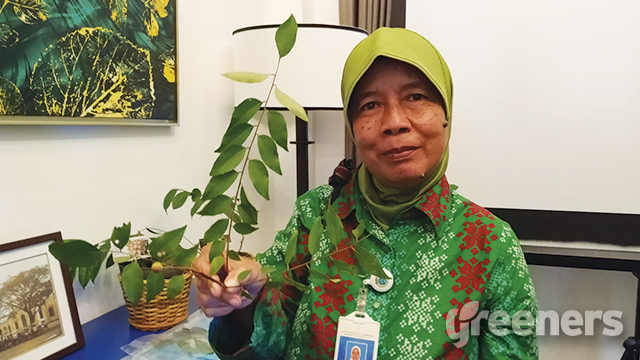Bogor (Greeners) – Bogor Botanical Garden, under Plants Conservation and Botanical Garden Indonesian Institute for Sciences, introduces new types from genus begonia, hoya, and murraya resulted from latest expedition.
The plants have been bred and cultivated due to several types are considered as endangered.
“This reveal of new types of plants has important contribution in plants conservation and give new understanding on Indonesia’s plants diversity and our resources,” said acting head of the research center of plants and botanical gardens conservation, R. Hendrian, in Bogor on Thursday (25/04/2019).
Hendrian said that it is expected that public can understand endemic plants of Indonesia from the new plants and they are managed accordingly. The newfound plants, he added, can be used for medicinal to body treatment.
“The new species is expected to provide information and new understanding about Indonesia’s plant biodiversity. This is very interesting not just from the dynamics of the data, but I also want from this event, public know and enjoy [the plants] in more popular ways,” he said.
READ ALSO: Indonesian Scientists to Develop Marine Biota Based Cancer Cure
Wisnu Aji Handoyo, begonia researcher at Indonesian Institute for Sciences (LIPI), said that there are 32 new types of begonia published in 21 international scientific publications. These are the results of expedition and research in the past ten years.
Indonesia is estimated to have more than 400 types out of the total of 1,924 types of begonia in tropical areas throughout the world.
Handoyo said that begonia spreads from Sumatra to Papua with 63 types in Sumatra, 197 types in Kalimantan, including Sabah and Sarawak, 14 types in Java, 12 types in Bali and Nusa Tenggara, 51 types in Sulawesi, 9 types in Maluku islands, and 80 types in Papua.
“These begonias have chemical compound potential as cancer cure medicines. It will be further verified by our pharmacy faculty colleagues. It’s already been tested but need more researches, because we are just getting to the taxonomy research. I call this type of begonia as Begonia Medicine for its active compound potentially to delay cancer cells growth,” he said.

Inggit Puji Astuti, researcher at the LIPI’s Research Center of Plants Conservation and Botanical Garden, showed Murraya cyclopensis, a new type plant from genus murraya. Photo: greeners.co/Dewi Purningsih
Other types being introduced are Murraya cyclopensis Astuti and Rugayah found at Kemiri Said Nature Reserve, Cyclops Mountains of Papua by I Nyoman Lugrayasa in Bali Botanical Garden in 2001.
Initially, the type is being identified as Murraya paniculata but changed into Murraya sp. after analyzing the flower and fruit.
Inggit Puji Astuti, researcher at the LIPI’s Research Center of Plants Conservation and Botanical Garden, conducted more researches to conclude that plant is a new type and given the name, Murraya cyclopensis.
“This new type is similar with Murraya paniculata (L) Jack based on the vegetative character and flower structure. The difference is on its twigs’ feathers, leaves, and leaf stalks. In addition, the flower size is smaller, rounder fruit with red color, and its round seed with short and thick feathers, also has pods covering the red seeds,” said Astuti.
Furthermore, she said that public uses murraya for face treatment, such as cold powder for smooth face. The treatment is particularly favored by Yogya palace residents. Some even use murraya as slimming herbs.
READ ALSO: LIPI Encourages Researchers to Register New Varieties for Legal Basis
Between 2014 and 2019, there are ten new types of genus hoya, of which nine have been published by international journals and one will be published this year.
Sri Rahayu, researcher at the same research center, said that hoya is a type of plant with high efficiency to absorb indoor pollutants.
“Currently, hoya is being used as decorative plant. There is a research from Florida stating that this type of hoya, compare to other indoor or decorative plants, have function to absorb pollutants with high efficiency. [Hoya] is top 5 the most effective, so hoya is very functional,” said Rahayu.
Reports by Dewi Purningsih



















































